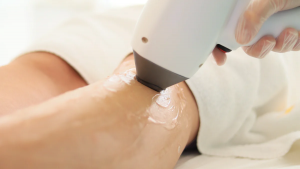The Science of Laser Hair Removal From Hair Follicles to Hairless Skin
Laser hair removal has become a popular method for achieving long-lasting hair reduction. Understanding the underlying science and techniques involved can help individuals make informed choices about their hair removal options. By utilizing focused light to target hair follicles, this technology enables efficient and effective hair removal. The procedure is increasingly adopted in both clinical and at-home environments, revealing insights into its mechanisms, safety protocols, and the specific outcomes it can provide.
Exploring the Basics of Laser Hair Removal
Definition and Overview
Laser hair removal is a cosmetic procedure that utilizes laser technology to permanently reduce unwanted hair. The process involves exposing hair follicles to beams of highly concentrated light, which is absorbed by the pigment in the hair. As a result, the hair follicle is damaged, inhibiting future hair growth without affecting the surrounding skin. The treatment is suitable for various body areas and offers a solution for individuals seeking a more permanent alternative to traditional hair removal methods, such as shaving or waxing.
Mechanism of Action
The mechanism of action in laser hair removal centers around selective photothermolysis. During this process, the energy emitted by the laser is directed specifically to the melanin within the hair shaft. The principle relies on the absorption of laser energy by the hair pigment, which generates heat. This heat then travels down to the hair follicle, damaging its structure, thus preventing future hair growth. This technique is what enables the procedure to provide effective results while minimizing damage to the surrounding skin tissue.
Scientific Principles Underlying Laser Hair Removal
Factors Affecting Laser Hair Removal Efficacy
The efficacy of laser hair removal can be influenced by several factors, including hair color, skin type, and the laser wavelength used. Darker hair tends to absorb more laser energy compared to lighter hair hues, rendering the treatment more effective for individuals with pronounced contrast between their hair and skin color. Skin type and condition also play a role; those with darker skin may require specialized lasers to ensure the safety of the surrounding tissue. Other factors, such as hormonal changes and hair growth cycles, further affect the outcome of the procedure, necessitating tailored treatment plans for optimal results.

In-depth Look at the Procedure
Pre-treatment Protocols
Before undergoing laser hair removal, adhering to pre-treatment protocols is essential for maximizing results and minimizing side effects. Patients are typically advised to refrain from sun exposure and to avoid tanning products for several weeks leading up to the treatment. Shaving the treatment area is generally recommended, as it allows for more effective energy absorption by the hair follicles. Additionally, individuals should consult with a qualified practitioner to discuss their medical history, skin type, and hair characteristics, ensuring a customized treatment plan that addresses their specific needs.
Treatment Process
During the treatment process, patients are required to wear protective eyewear to shield their eyes from the laser light. A handheld device is used to deliver pulses of laser energy to the treatment area. The sensation during the procedure has been described as similar to the snap of a rubber band against the skin, which is generally tolerable for most individuals. Treatments typically last from a few minutes to over an hour, depending on the size of the area being treated. Multiple sessions are necessary to achieve optimal results, as hair grows in cycles and the laser is most effective during the active growth phase of the hair cycle.
Post-treatment Care and Recovery
Post-treatment care is a crucial component of the laser hair removal process to ensure proper recovery and maintain skin health. After the procedure, patients may experience mild redness, swelling, or a sensation akin to sunburn in the treated area. Application of soothing creams and avoidance of sun exposure for several weeks is recommended to minimize the risk of pigmentation changes. Individuals should also avoid harsh skin treatments and follow any specific aftercare instructions provided by their practitioner. Regular follow-up appointments may be necessary to assess the effectiveness of the treatment and address any further hair removal needs.

Anchorfree: A Pioneer in Laser Hair Removal Technologies
Company Background and Innovation
Anchorfree has established itself as a key player in the realm of laser hair removal technologies. Founded with a vision to create effective and user-friendly solutions, the company has invested extensively in research and development to enhance hair removal systems. Their commitment to innovation has led to the integration of cutting-edge technologies that optimize safety and efficacy in hair removal procedures. By leveraging advanced laser technologies, Anchorfree has made significant contributions that cater to a diverse clientele, ensuring that individuals from various backgrounds can benefit from effective laser hair removal solutions.
Unique Selling Propositions (USPs)
Anchorfree differentiates itself in the laser hair removal market with several unique selling propositions that appeal to both practitioners and patients. First, the company prioritizes safety and patient comfort through patented cooling systems integrated into their devices, which minimize discomfort during the procedure. Additionally, Anchorfree offers customizable laser configurations that can be adjusted based on the patient’s skin type and hair characteristics, thereby optimizing treatment efficacy. Furthermore, their devices are designed with user-friendly interfaces, making it easier for practitioners to administer treatments efficiently and accurately, resulting in enhanced patient satisfaction.
Evaluating the Benefits and Risks
Advantages of Laser Hair Removal
Laser hair removal presents a host of advantages that make it a preferred choice for individuals seeking long-term hair management solutions. One of the main advantages is the significant reduction in hair growth after a series of treatments. Patients often report smoother skin and a substantial decrease in ingrown hairs, which are common complications associated with traditional hair removal methods. Furthermore, laser hair removal can be performed on various body areas, making it versatile for different treatment needs. The procedure also allows for time efficiency, as patients enjoy longer intervals between hair regrowth, reducing the necessity for frequent maintenance sessions.

Potential Side Effects and Risk Mitigation Strategies
While laser hair removal is generally safe, understanding potential side effects is crucial for patients considering this procedure. Common side effects include temporary redness, swelling, and mild discomfort in the treated area. These symptoms typically subside shortly after treatment; however, it is important to inform patients about proper aftercare to mitigate these effects. To minimize risks, practitioners should conduct thorough pre-treatment assessments, including skin type evaluation, to anticipate any complications and customize the treatment plan accordingly. Establishing trust and clear communication between the practitioner and the patient is vital in managing expectations and addressing any concerns, thus ensuring a smoother and more successful laser hair removal experience.







